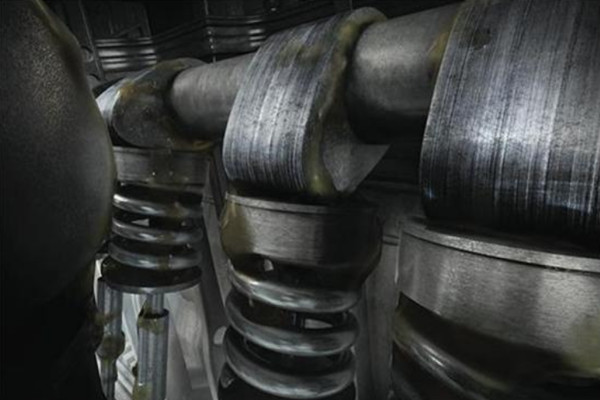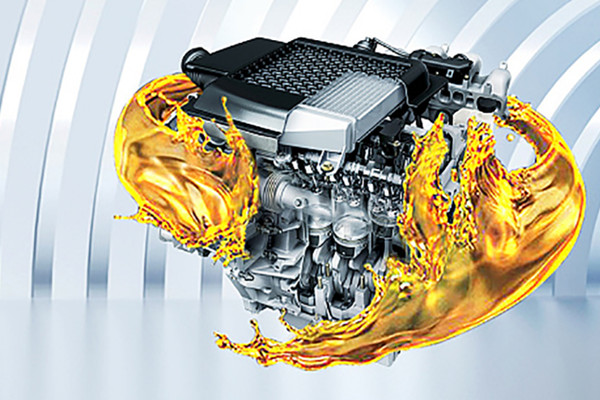
TR-202 Zinc Butyl Octyl Primary Alkyl Dithiophosphate

TR-EPC02 Ethylene-Propylene Copolymer

Lithium 12-Hydroxystearate Lithium Grease Lithium Based Grease

Graphene Best Oil Additive Engine Oil additive

Graphite Powder Graphite Lubricant Dry Graphite Lubricant

MoS2 Friction Modifier Molybdenum Disulfide
Lubricant oil are widely used in automobiles, machinery, metallurgy, and other industries. They are essential products related to the national economy and people's livelihood.
In the composition of lubricating oil products, the base oil content accounts for 70% to 99%. The best oil additive is an essential factor that determines the performance and service life of lubricating oils. From the 1930s to the present, oil additives have developed many varieties, which have been extended into five categories of additives, namely detergents, dispersant additives, anti-friction oil additive, Antioxidants and viscosity index improvers.

What is the friction modifier?
Engine oil friction modifiers can prevent the metal surface from abrasion, abrasion, and scorch under the condition of high load on the metal surface.It has top active groups and decomposes when the pressure and temperature conditions are severe. The decomposed active materials polymerize under friction to form a thick, tough film, or interact with the surface of the friction pair to form a modified layer, which can reduce wear.
Engine oil friction modifiers can be divided into sulfur-based anti-friction oil additive, phosphorus-based friction reducer oil additive, halogen-based anti-friction oil additive, and organic metal (including lead naphthenate and dialkyl dithiophosphate) ZnDTP, etc.), boron-based antiwear agents (including inorganic borate and natural borate), etc.
However, with the rapid development of modern industry and the continuous improvement of individual requirements for the natural environment and health consciousness, these single-active element antiwear agents have become increasingly challenging to meet the needs of harsh working conditions and the development of the times. For example, chlorine-based friction reducer oil additive has been banned in some countries such as the United States and Western Europe because of its toxicity; lead naphthenate has also been gradually phased out due to ecological and toxicity issues; sulfur- and phosphorus-based anti-friction oil additives will cause exhaust gas converters The three-way catalyst poisoning, affecting the accuracy of the oxygen sensor measurement, and the toxicity to the ecological environment, have been limited to use by international regulations. For example, the amount of ZDTP in American lubricants was reduced from 0.12% in the 1990s to 0.08%. Anti-friction oil additive also has problems with dispersion stability and water sensitivity. Under the international regulations that limit the use of sulfur and phosphorus traditional single-element friction reducer oil additives and the requirements of working conditions are becoming increasingly severe, the diversification and integration of friction reducer oil additives will inevitably develop.
ZDTP is a global best anti-friction oil additive. Although it has catalyst toxicity and other problems, it has superior performance. In addition to outstanding abrasion resistance, it also has oxidation resistance, corrosion resistance, suspension dispersion, and other effects. It is widely used in lubricating oil, such as gear oil.

In 2019, the global production and consumption of lubricant reducer oil additive were nearly 400,000 tons. North America's use of antiwear agents accounts for more than 27% of the worldwide use of friction reducer oil additives, Western Europe's use of friction reducer oil additives accounts for 14% of the world's total consumption of antiwear agents, and China's use of conflict reducer oil additives accounts for the global resistance The full consumption of abrasives reached 16%. Other countries and regions accounted for nearly 43% of the total global use.
In the next few years, the US lubricant market will shrink, and the demand for friction reducer oil additive will also decrease slightly. Western Europe will grow at a rate of 1% to 3%. The need for China's friction reducer oil additive will be 3%. The growth rate is from 5% to 4.5%. There are 13 and 10 companies producing North America and Western Europe Friction Reducer Oil Additives. In addition to the four major lubricant additive companies, BSF, ENI, and Chemtura also participate in it; China currently also has Luoyang Tongrun Info Technology Co., Ltd. All oil additive companies can provide best oil additive products.
With the increasing requirements of environmental protection, the demand for environmentally-friendly lubricant additives has also increased accordingly. While meeting working performance, it should also be biodegradable and environmentally friendly. Low phosphorus, low sulfur, little ash, biological degradability had become a significant development direction for future best oil additives.
In the next few years, the US lubricant market will shrink, and the demand for friction reducer oil additive will also decrease slightly. Western Europe will grow at a rate of 1% to 3%. The need for China's friction reducer oil additive will be 3%. The growth rate is from 5% to 4.5%. There are 13 and 10 companies producing North America and Western Europe Friction Reducer Oil Additives. In addition to the four major lubricant additive companies, BSF, ENI, and Chemtura also participate in it; China currently also has Luoyang Tongrun Info Technology Co., Ltd. All oil additive companies can provide best oil additive products.
With the increasing requirements of environmental protection, the demand for environmentally-friendly lubricant additives has also increased accordingly. While meeting working performance, it should also be biodegradable and environmentally friendly. Low phosphorus, low sulfur, little ash, biological degradability had become a significant development direction for future best oil additives.
Infomak is dedicated to the technology development of special oil additives, combined the Technology of nanomaterials developed dry lubricant and oil additives two series. Our products can significantly improve the performance of lubricating oil, improve energy efficiency, effectively protect the lubrication device and extend the oil change cycle, which can satisfy the lubrication oil constantly upgrading for high-end engine oil additives. Contact us.




